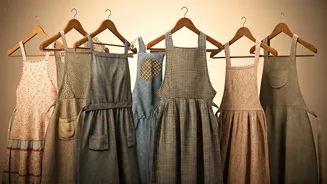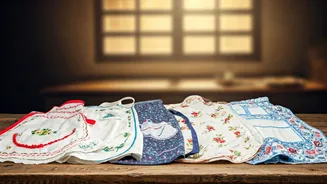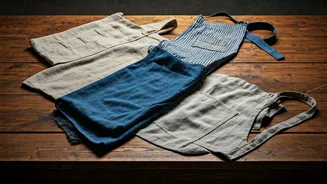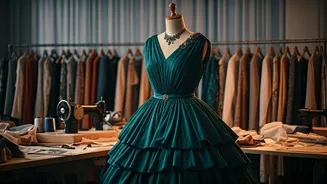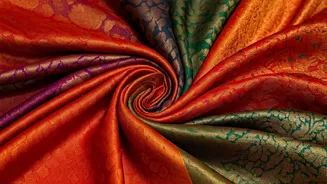Ancient Origins
The roots of the apron can be traced back to antiquity. Early forms of aprons were primarily functional, providing protection to clothing and skin during
labor-intensive activities. Ancient civilizations, including Egyptians and Romans, utilized aprons made from basic materials like animal hides and woven fabrics. These early versions were less about style and more about utility, acting as a barrier against dirt, spills, and the harsh conditions of manual work. The practical design of these ancient aprons laid the groundwork for the more elaborate and stylized versions that would emerge in later periods, serving as precursors to the modern apron we know today. The apron's evolution reflects humanity's continuous adaptation and refinement of tools to meet the demands of everyday life, highlighting the interplay between functionality and necessity.
Aprons Medieval Times
During the Medieval period, aprons continued to serve primarily utilitarian purposes. They were worn by various craftspeople, including blacksmiths, cooks, and artisans, to safeguard their clothing from the grime and hazards of their trade. These aprons were often made of sturdy materials such as leather or thick canvas, designed to withstand rigorous wear and tear. The style of aprons in this era was typically simple and straightforward, with a focus on practicality rather than ornamentation. They were a necessary part of the working person's attire, reflecting the era's emphasis on functionality and the division of labor. Although fashion trends were evolving, the apron's role remained constant: providing essential protection and support in various professions and tasks. The apron's enduring presence demonstrated its vital role in medieval society.
Aprons Renaissance and Beyond
The Renaissance and subsequent eras witnessed a transformation in the apron's purpose and design. While functionality remained important, aprons began to incorporate elements of style and status. Wealthier individuals and specific occupational groups started to use aprons to indicate their social standing or professional affiliation. During the Renaissance, aprons became more ornate, with the use of finer fabrics, intricate embroidery, and decorative embellishments. This transition signaled the merging of function with fashion. As society developed, different types of aprons emerged, each with its own specific use, such as the elaborate aprons worn by cooks and the starched white aprons adopted by domestic workers. The apron's evolution shows the shift from a basic protective garment to a garment reflecting personal expression and social identity.
Modern Aprons
In the modern era, aprons have diversified significantly, adapting to contemporary needs and styles. They are no longer limited to the workplace or kitchen, but have entered the realms of fashion, hobbies, and personal expression. Modern aprons come in a wide array of materials, from durable denim and canvas to stylish linen and patterned fabrics. They are available in various lengths, cuts, and designs, catering to a diverse range of preferences. Moreover, aprons have also taken on promotional and branding roles. Businesses and organizations frequently use aprons to establish a visual identity, boosting brand recognition among their target audiences. The apron's enduring adaptability demonstrates its capacity to evolve with society, maintaining relevance while fulfilling practical and aesthetic needs.
Aprons Today
Today, aprons are a combination of practicality and personal flair. They protect clothing and also reflect the wearer's individuality. Chefs use aprons for protection and to show their professional image, while home cooks choose aprons that complement their style. The apron has become a form of self-expression, with various colors, patterns, and designs to match personal tastes. Whether it's a simple, functional garment or a fashion statement, the apron remains a vital accessory in modern life. The contemporary apron symbolizes how items can continue to adapt and evolve within an ever-changing environment.
